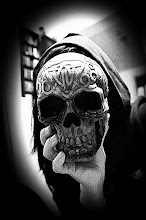skip to main |
skip to sidebar
Scotoplanes
I'll start of with presenting a funny little entity that I first came across earlier this year, in a blog post (perhaps through nature.com? I can't remember.) of novel deep sea findings. Along with giant sea stars, horrifying worms and other breath taking creatures there was a chubby jellyish thing that caught my eye. It was referred to as the not really flattering name "sea pig" and naturally, I had to know more... (Image revised from: http://galathea3.emu.dk/es/blog/cerdos-de-mar.html)
(Image revised from: http://galathea3.emu.dk/es/blog/cerdos-de-mar.html) Scrotplanes belong to the phylum Echinoderms, which includes other sea floor creatures such as sea stars, sea urchins and sea cucumbers. In the phylum, they are further classified as Holothuroidea, which states that they are more related to the sea-cucumbers than the other members of this phylum. Together they form large groups on the sea floor, making their way in a sludge-like fashion. Movement is generated by using long tube feet. I don't know if these feet is what can be seen on the picture on the left, or if those feet-like thingies are just some tentacles or confusing ornaments of unknown purpose.
Scrotplanes belong to the phylum Echinoderms, which includes other sea floor creatures such as sea stars, sea urchins and sea cucumbers. In the phylum, they are further classified as Holothuroidea, which states that they are more related to the sea-cucumbers than the other members of this phylum. Together they form large groups on the sea floor, making their way in a sludge-like fashion. Movement is generated by using long tube feet. I don't know if these feet is what can be seen on the picture on the left, or if those feet-like thingies are just some tentacles or confusing ornaments of unknown purpose.
(Image revised from http://www.mbari.org/benthic/holothurians.html)Sources:http://en.wikipedia.org/wiki/Scotoplaneshttp://animals.jrank.org/pages/1631/Sea-Cucumbers-Holothuroidea-SEA-PIG-Scotoplanes-globosa-SPECIES-ACCOUNTS.html

Inga kommentarer:
Skicka en kommentar